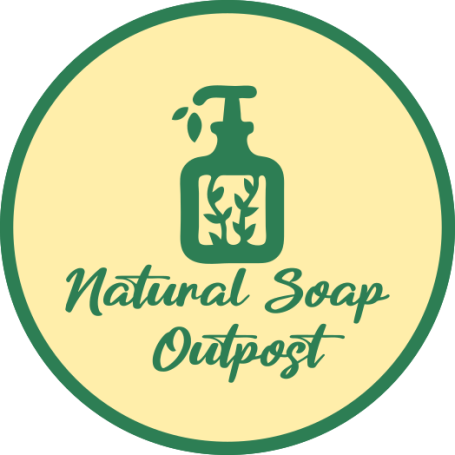
The Fascinating History of Soap: From Ancient Origins to Modern Industrialization
The Accidental Discovery of Soap
Legend has it that soap was first discovered by accident during a long-ago cookout. Imagine this: globs of animal fat dripping from roasting meat into ashes from the fire. The result? A slippery substance that turned out to be excellent at lifting dirt and grime from skin. This unintentional concoction became the foundation of soap as we know it.
Ancient Babylon is credited with the earliest evidence of soap-making, dating back to 2800 BCE. Archaeologists have uncovered clay tablets inscribed with instructions for mixing fats and ashes to create a cleansing agent. Similarly, ancient Egyptians around 1500 BCE combined animal and vegetable oils with alkaline salts to treat skin diseases and wash themselves. In fact, the Ebers Papyrus, a medical document from that era, details soap-like substances used for hygiene and medicinal purposes.
Soap’s Role in Ancient Civilizations
The Sumerians, Egyptians, and Babylonians weren’t the only ones using primitive soaps. Early Greeks and Romans also adopted cleansing methods, though soap was initially reserved for tasks like preparing wool for dyeing rather than personal hygiene. Sumerians boiled fats and oils with alkalis to produce effective cleaning solutions, while ancient Roman bathhouses used a mix of essential oils and abrasives like fine sand.
An intriguing Roman legend credits the word “soap” to Mount Sapo, a mythical site where animal sacrifices took place. Rain would wash a mixture of animal fat and ashes down into the Tiber River, where locals discovered its cleaning properties. Roman historian Pliny the Elder also documented soap-making recipes, indicating its uses for treating skin ailments and even dyeing hair. Though bathing habits declined after the fall of the Roman Empire, the knowledge of soap-making was never entirely lost.
The Middle Ages: Soap’s Survival and Evolution
During the Middle Ages, soap became a luxury item largely reserved for industries like cloth dyeing rather than personal hygiene. However, soap-making flourished in regions like Italy, Spain, and France, where olive oil and plant ash created high-quality soaps. Castile soap, made from olive oil, became especially popular and remains a classic to this day.
In Britain, soap-making centered in towns like Bristol and London. Artisans guarded their recipes closely, passing them down from master to apprentice. Interestingly, the production of certain soaps, like speckled soap made from animal tallow, was restricted due to the foul odor and the potential strain on tallow reserves needed for candle-making. As a result, soap was heavily taxed, making it a luxury for the wealthy.
The Renaissance of Hygiene
The Renaissance brought renewed interest in cleanliness, partly driven by advances in plumbing and the development of soap-making techniques. Chemists and soap manufacturers in the 17th and 18th centuries refined the process, experimenting with ingredients to create milder, more fragrant soaps. Perfumed soaps became a hit among the upper classes, with innovations like Andrew Pears’s gentle soap catering to delicate complexions.
In the United States, soap-making began as a household chore in the 1600s but quickly evolved into a commercial industry. The repeal of Britain’s soap tax in 1853 made soap more accessible, contributing to improved hygiene standards. During the Industrial Revolution, mechanization and steam power enabled mass production, transforming soap into an everyday necessity.
From Soap to Detergents: The Decline of Natural Soap
For centuries, the basic chemistry of soap remained unchanged: fats or oils combined with an alkali (like lye) through a process called saponification. This reaction produced a thick slurry that solidified into soap.
By the mid-20th century, German chemists discovered detergents during World War I, when shortages of animal and vegetable fats forced them to seek alternatives. Unlike traditional soap, detergents used synthetic surfactants to lift dirt and grease. These new products cleaned more effectively in hard water and didn’t leave behind soap scum.
Corporate giants saw an opportunity to cut costs and maximize profits by replacing real soap with synthetic detergents, concocted from petroleum byproducts and harsh chemicals. Unlike traditional soap, these artificial cleaners strip the skin of its natural oils, contribute to water pollution, and are often laced with irritants and toxins.
Thanks to aggressive marketing and mass production, chemical detergents became the norm, while the superior, time-tested benefits of real soap were buried under layers of industry-driven misinformation.
Today, many products labeled as “soap” are actually detergents. They may contain some traditional ingredients, like sodium tallowate (from animal fats) or sodium cocoate (from coconut oil), but they’re often mixed with chemical surfactants, brighteners, and other additives.
Soap’s Chemistry: How It Works
The magic of soap lies in its ability to reduce water’s surface tension. Soap molecules have a hydrophilic (water-attracting) head and a hydrophobic (water-repelling) tail. When you rub soap on your hands, its molecules surround dirt, grease, and even bacteria, forming tiny droplets called micelles. These micelles are then rinsed away with water, leaving your skin clean.
Interestingly, soap doesn’t kill germs. Instead, it lifts them off your skin and sends them down the drain. This mechanical action makes soap and water more effective than hand sanitizers, which rely on alcohol to neutralize bacteria and viruses.
A Testament to Tradition
The history of soap is a fascinating one and a testament to human creativity and the pursuit of cleanliness.
Today, while detergents dominate the market, artisanal soap makers like the ones at Natural Soap Outpost still work hard to keep the ancient, time-honored traditions alive.
At Natural Soap Outpost, we don't believe in harsh chemicals or artificial additives — just the wholesome, handcrafted quality that has cleansed generations before us.
Visit our store today and join us in the enduring human quest for a cleaner world.
©Copyright. All rights reserved.
We need your consent to load the translations
We use a third-party service to translate the website content that may collect data about your activity. Please review the details in the privacy policy and accept the service to view the translations.
